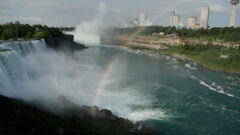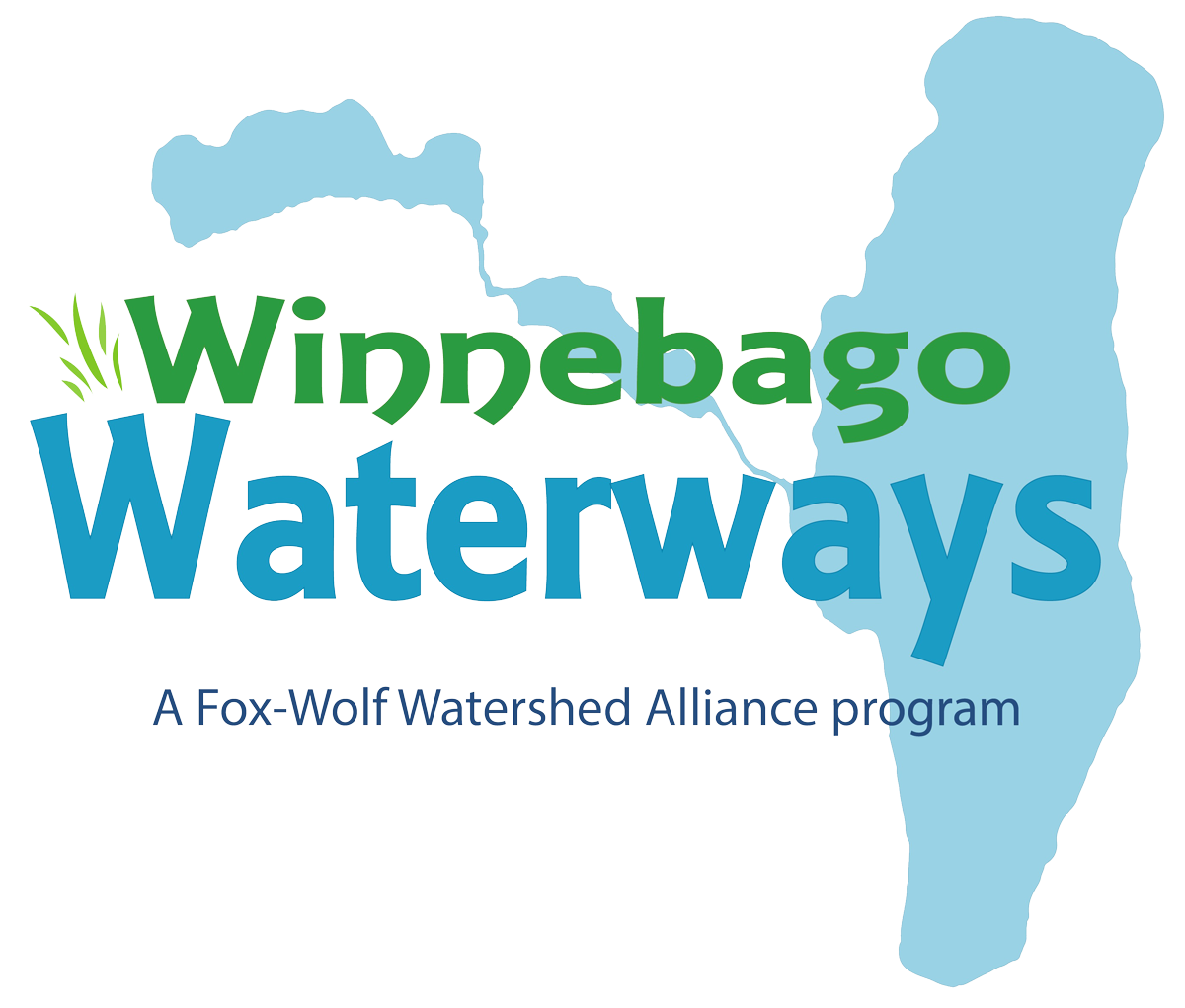Biden-Harris Administration Invests $85M for Industry Proving Grounds Program to Strengthen Climate Resilience Through “Investing in America” Agenda
NCEI News Feed
https://www.ncei.noaa.gov/news/industry-proving-grounds
Northern Wisconsin communities benefit from climate change program
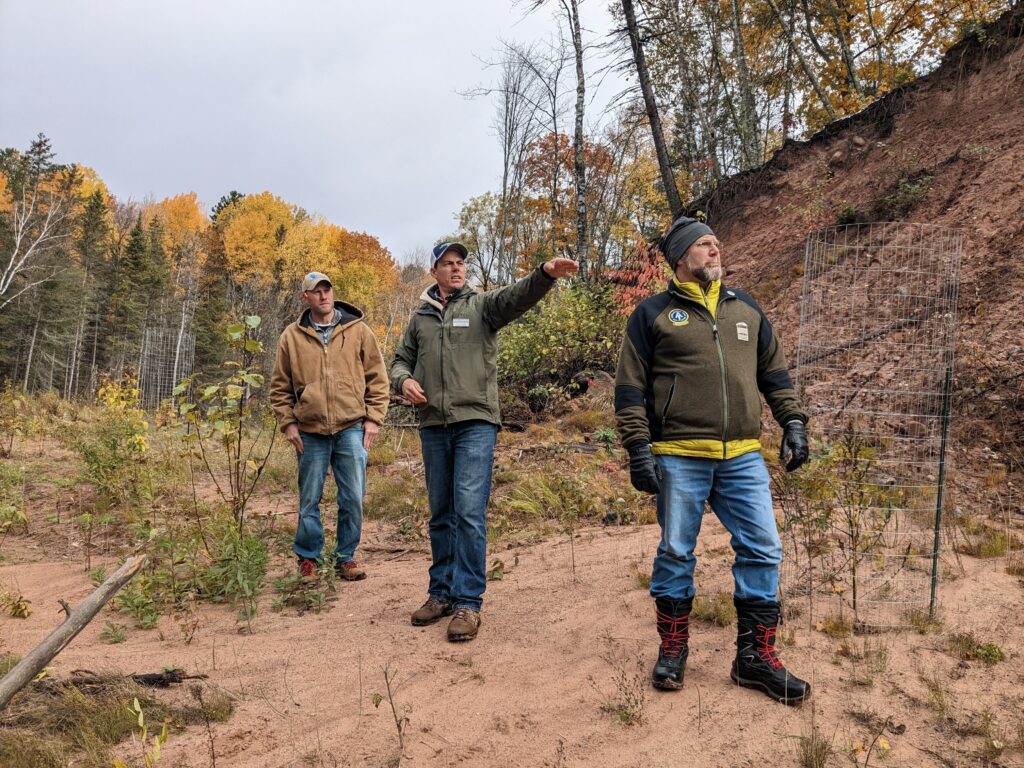
Members of the Lake Superior Climate Champions Program take a field trip to an eroded area in northern Wisconsin. Pictured left to right are Dave Sletten, Matt Hudson and Tony Janisch. Image credit: Karina Heim, Lake Superior Reserve
It’s official: 2023 was the hottest since we’ve been keeping records, according to the National Oceanic and Atmospheric Administration. This can trigger extreme weather events such as storms and flooding. Northern Wisconsin is not immune from the impacts of climate change and communities are taking action.
Leaders in several northern Wisconsin counties and cities were chosen to participate in a Lake Superior Climate Champions Program organized by Wisconsin Sea Grant and the Lake Superior National Estuarine Research Reserve in 2023. The program provided funding and guidance to two teams to work on goals of their choosing that addressed climate change.
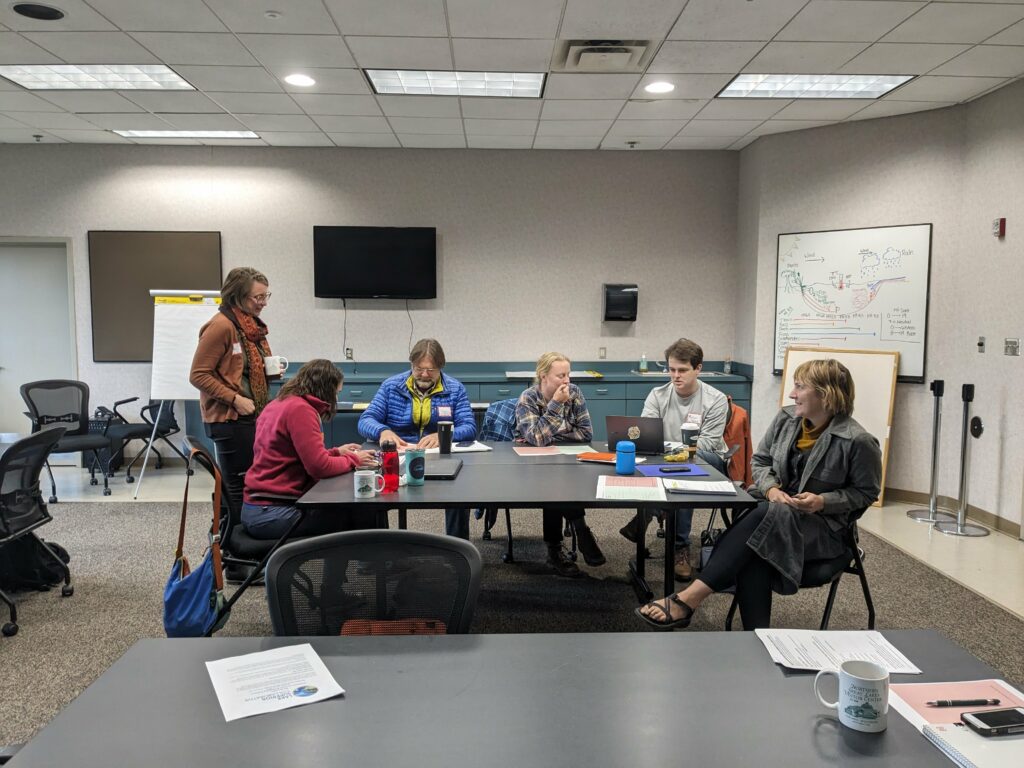
Members of the Washburn/Ashland Climate Champions team attend a coastal resilience adaptation workshop organized by the Northern Institute of Applied Climate Science. Pictured left to right are Danielle Shannon, Sara Hudson, Tony Janisch, Bree Schabert, Matias Valero and Jessica Jacobson. Image credit: Karina Heim, Lake Superior Reserve
The first team from the cities of Washburn and Ashland included Tony Janisch, Washburn assistant city administrator, and Sara Hudson, Ashland park and recreation director and city forester. Their project involved creating the outline of a coastal adaptation plan for their cities that focused on flood resilience and climate adaptation. They also developed a project priorities list, connected with other communities at a climate-focused annual conference by the Great Lakes and St. Lawrence Cities Initiative in Chicago and brought a coastal resilience adaptation workshop to the region in collaboration with the Northern Institute of Applied Climate Science and the Lake Superior Collaborative.
During a webinar, Janisch described how the contacts he made during the Great Lakes and St. Lawrence Cities Initiative Conference helped him find funding for a long-standing problem in Washburn.
“We have some significant coastal erosion at one of our parks in the city. I had spent three years trying to find funding to start the work. I was connected with someone and then was able to get some FEMA funding. So, we have an engineer now doing design work for how to solve the problem,” Janisch said.
Another erosion project Janisch found possible funding sources for involves Thompson’s Creek, which runs underneath a local highway and along another road. “There was some erosion going on with one of the creek bends that’s eating away at one of our side roads. It’s very possible that it could start eroding the right-of-way on the highway itself,” Janisch said.
Hudson said the champions program, “…Opened up a couple projects that have been on the back burner in my mind. And then also just creating more of a living shoreline along our Baker City Creek Estuary and along the ore dock shoreline that is there. It’s been a really good process.”
The second team included emergency managers from Ashland, Bayfield, Douglas and Iron counties. These are Dorothy Tank (retired from Ashland County), Dave Sletten (Douglas County), Stacy Ofstad (Iron County) and Meagan Quaderer (Bayfield County) Their project focused on developing a digital form to record road maintenance activities for Great Lakes coastal counties in Wisconsin and beyond.
Quaderer said that development of the road maintenance form was timely. “This spring, the region had a lot of flooding and a lot of [road] damage. So, we actually had a real-world application of the document, especially in Bayfield County.”
The team presented the form at a Wisconsin Northwest Region Emergency Managers Meeting and it garnered their interest as well as that of representatives from Minnesota. The team was asked to present the form again to the Statewide Hazard Mitigation Committee. Those members saw the overwhelming value of the tool.
“I think it’s something that will be used here within our four counties but also hopefully, within both states,” Sletten said.
Tank said the form has already been used in Ashland County for a number of federally declared disasters. “It was not only approved at the state level, but by FEMA. It contained all the information they wanted,” she said.
The Climate Champions Program was facilitated by Karina Heim with the Reserve and Natalie Chin with Sea Grant. They recently released the call for applications for this year. Apply at this link: https://go.wisc.edu/0385yk. The deadline is March 15.
For more general information, visit: https://go.wisc.edu/am468e.
The post Northern Wisconsin communities benefit from climate change program first appeared on Wisconsin Sea Grant.News Releases | Wisconsin Sea Grant
News Releases | Wisconsin Sea Grant
https://www.seagrant.wisc.edu/news/northern-wisconsin-communities-benefit-from-climate-change-program/
Watershed Moments: You Wouldn’t Have the Fox Valley
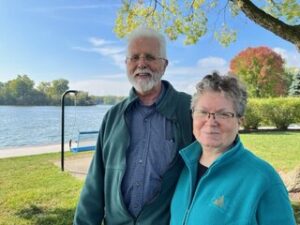
Ken and Megan Karth are citizen scientists, collecting data for use in assorted projects.
Ken Karth made a living making dirty water clean. “When I started working in the business, the Wisconsin River was a sewer,” he said. That was before the clean water act when industrial wastewater and raw sewage were commonly dumped into open rivers. In the last 50 years, that river has seen a 95% decrease in oxygen impairment in the water.
Eventually, Ken and Megan moved to the Fox Valley, and he noticed the same dedication to improving the water quality. He worked at Consolidated Paper, and there was political pressure to keep the mills running at high capacity. But there was also pressure to do the best job you could. The owner of the factory lived on an island in the Fox River, so he was known to tell his employees “I want the river as clean as we can possibly get it!”
As volunteers with Fox-Wolf, Ken and Megan care deeply about our water quality. They’ve lived through polluted water and the process of cleaning up. But they’re aware of the current threats to our water, and they don’t want to see things get worse.
Looking out at the Fox River from Jefferson Park in Menasha, Ken said, “Water means so much here. You wouldn’t have the Fox Valley if you didn’t have water.” From recreation, to drinking water, to business, “it touches every aspect of our lives!”
Ken recalls that in his early days on the Wisconsin River, you could smell which walleye were local. The sulfides from the polluted water seeped into the fish. At a fish fry, the smell of sulfur would escape, and local fish never won the taste test competitions. The waters of the Fox-Wolf Watershed are considered a premiere walleye fishery, and Ken hopes it stays that way.
When Ken and Megan visit their son in Kewaunee County, they have to buy drinking water. Many residents of the county rely on untreated well water. The combination of a high density of farms and shallow soil mean they are constantly monitoring for unsafe water conditions.
“I don’t want that to be true here,” said Megan. “We don’t have to think a lot about turning on the tap. There are places that is such a luxury.” Megan is thinking not only about water safety, but the availability of water. In such a water-rich area of the country, Megan has “the luxury of not having to think about every drop. I can water my vegetable garden.”
To keep tabs on the water, Ken and Megan volunteer with Fox-Wolf. They check for invasive plants about three times a year, and once a month they take water samples. “We go on a nice day and pack a picnic lunch,” Megan said. They also help with planting and maintaining plots of native shoreline plants.
They love having a way to help that fits into their calendar. “The annual cleanup is a one-day thing, and that may not work for us,” Megan said. Collecting water samples “has a window, and we can work it around our own schedule.”
“Water connects everything,” Ken said. “You’re doing things we believe in, and we really like the people that we’ve met. We’re grateful for Fox-Wolf, that you’re there.”
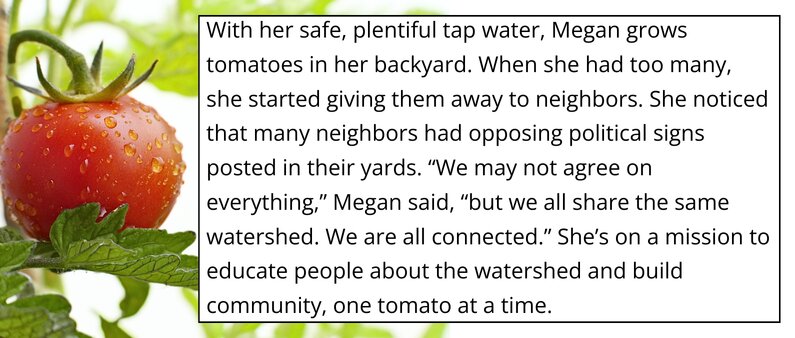
Watershed Moments is a publication of Fox-Wolf Watershed Alliance, sharing the stories of how your donations have impacted lives in our community. Read our latest project updates, make a secure online donation, or become a member at www.fwwa.org
The post Watershed Moments: You Wouldn’t Have the Fox Valley appeared first on Fox-Wolf Watershed Alliance.
Fox-Wolf Watershed Alliance
https://fwwa.org/2024/01/23/watershed-moments-wouldnt-have-fox-valley/?utm_source=rss&utm_medium=rss&utm_campaign=watershed-moments-wouldnt-have-fox-valley
2023 WMM Annual Report is Released
NCEI News Feed
https://www.ncei.noaa.gov/news/2023-wmm-annual-report-released
Thank you to our departing board member
Thank you to our board member!

We want to thank one of our board members for years of leadership and service to the Fox Locks. Jean Romback-Bartels, our representative from the Wisconsin Department of Natural Resources, will be retiring from her day job in January, and also retiring from the board of directors. Her investment of professional and personal time in the operation of the locks system has been invaluable.
Q: Why are the Fox Locks important to the DNR?
A: Anything that enhances the public’s ability to get out and enjoy the natural resources of this amazing state is important to the Department of Natural Resources. And to have this unique and historic feature traversing the popular and populous Fox River Valley–well, it goes without saying that we at the DNR are interested and invested in this state treasure.
Q: How does this unique attraction support the DNR’s mission?
A: Our mission statement is all about preserving and protecting the natural resources for all people to enjoy. Having the lands held by the state, for the people of the state, and available for their use to walk on, fish from, or voyage through on a boat is what we want, what we need the people to do in order to stay connected to the resources. People who are connected care.
Q: Why was public service on the board important to you personally?
A: As you know, the DNR has an obligation to be a member of the board of directors, but it goes beyond that. Public service is an honor. The public is, by default of my being hired into this position as Secretary’s Director in northeast Wisconsin, expecting me to serve in all of my duties with their best interest at heart and to the level of their expectations. I took that charge seriously when I was hired into my first job and will until I step away and retire from my position. I serve the people of the state, those who live, work, and/or play in the state. Whether you have ever visited northeast Wisconsin or not, my job was to ensure that if you did, it would be a good experience with resources to explore.
Q: What is your best hope for the future of the Fox Locks?
A: My best hope for the lower Fox River locks is a long existence, where history and people come together and we slow down, take the time to really look at the cultural, historical, and natural resources at hand and appreciate all the river has to offer.
Blog – Fox Locks
https://foxlocks.org/blog/thank-you-to-our-departing-board-member/
Lake Erie is 13% frozen, expect less freezing in the future
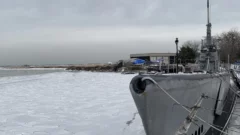
By Josh Boose, Ideastream Public Media
This story was originally published by Ideastream.
Lake Erie is behind its typical freezing schedule.
The schedule depends on different weather patterns, according to National Oceanic and Atmospheric Administration Director of Communications Jennifer Day.
Great Lakes Now
https://www.greatlakesnow.org/2024/01/lake-erie-is-13-frozen-expect-less-freezing-in-the-future/
Project underway to improve portages
Project underway to improve portages
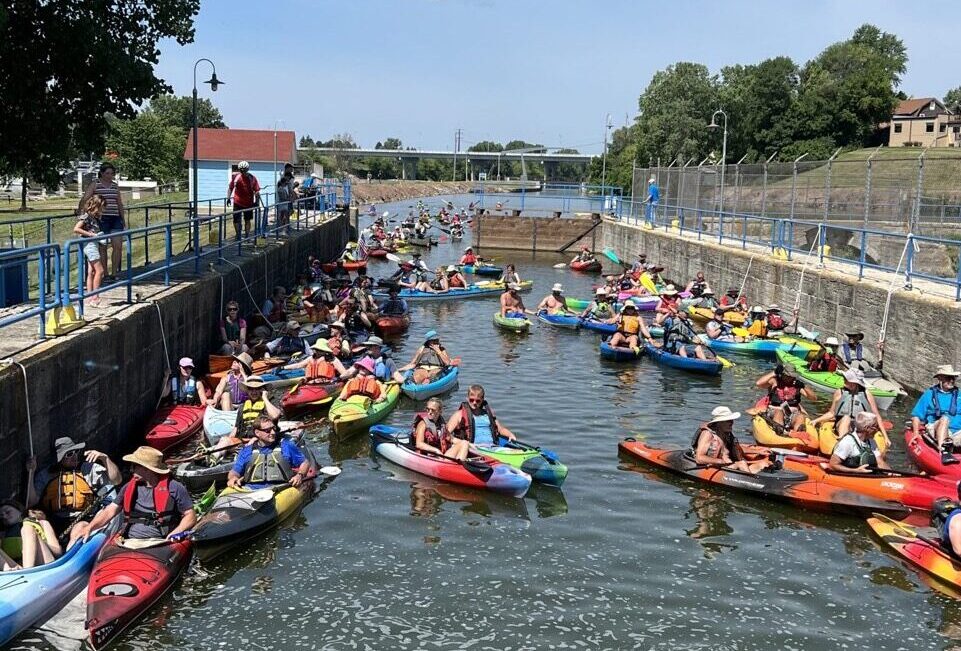
Thanks to a grant from the David L. and Rita E. Nelson Family Fund within the Community Foundation for the Fox Valley Region, construction will soon begin to improve portages on the Fox River locks system. The $150,000 grant will be used to help build improved portages along the system.
Since reopening the locks in 2015, non-motorized boaters have been portaging around the lock and dam system through temporary or makeshift portages often made by the boaters for one season. Existing portages are muddy, rugged paths or have not been maintained and are unsafe. And in recent years the Fox Locks have attracted a growing number of paddlers.
“We have seen steady growth in people exploring the Fox River through the locks on kayaks and canoes,” said Phil Ramlet, executive director of FRNSA. “Improving the portages is the best thing we can do to make the river accessible to a broad range of users and this grant will help us do that.”
Portages will be designed for safety and convenience of boaters at improved access points along the lock system. Another benefit of upgrading the portages is they will help to stabilize the shoreline along the locks.
“Most people are not aware of how the swift current of the Fox River erodes and destabilizes the shoreline along the lock system,” Ramlet said. “The grant will help us support our mission of repairing and maintaining the lock system for all boaters.”
Non-motorized boaters use the portages to carry their canoes or kayaks overland rather than going through the locks. Because the locks operate primarily on weekends from Memorial Day through Labor Day, paddlers often use the portages to navigate the elevation change on the Fox River when the locks are not operating.
We are still seeking additional donations to complete the portage construction which is estimated at $495,000 and the portages will be phased in over a period of three to five years. If you are interested in supporting this effort, please visit this link.
Blog – Fox Locks
https://foxlocks.org/blog/project-underway-to-improve-portages/
Points North: Can AI Caribou Lead Us To Our Prehistoric Past?
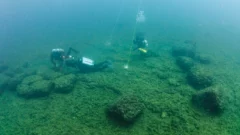
Points North is a biweekly podcast hosted by Daniel Wanschura and Morgan Springer about the land, water and inhabitants of the Great Lakes.
This episode was shared here with permission from Interlochen Public Radio.
At the bottom of Lake Huron there’s a ridge that was once above water.
Great Lakes Now
https://www.greatlakesnow.org/2024/01/points-north-can-ai-caribou-lead-us-to-our-prehistoric-past/
Transforming the watershed: How local grants are shaping a sustainable future for the Great Lakes region
Multiple small grants have been awarded to Buffalo, New York, area organizations through the New York Great Lakes Basin Small Grants Program. The projects aim to promote sustainable land use, improve water quality and manage natural resources using ecosystem-based approaches. Read the full story by Buffalo Rising.
Great Lakes Commission
https://www.glc.org/dailynews/20240122-transformingwater-localgrants-sustainablefuture
Local group receives $323,000 to improve Lake Superior coastline in Marquette
The Superior Watershed Partnership recently received a Great Lakes grant to benefit water quality, coastal habitat and climate adaptation in the city of Marquette, Michigan. The $323,000 grant from the National Fish and Wildlife Foundation Sustain Our Great Lakes Program will be used to install green infrastructure that incorporates native plant species to improve stormwater runoff at numerous sites along the ten miles of Lake Superior coastline within the city of Marquette. Read the full story by Radio Results Network.
Great Lakes Commission
https://www.glc.org/dailynews/20240122-grant-lakesuperior-shoreline-marquette
Drone video captures iconic Lake Michigan lighthouses covered in ice
The Lake Michigan shoreline transformed this week into a whimsical land of ice after a recent winter storm hit the Great Lakes region. Drone footage of both the South Haven and St. Joseph, Michigan, lighthouses covered in ice was captured last week. Read the full story by MLive.
Great Lakes Commission
https://www.glc.org/dailynews/20240122-dronevideo-lakemi-lighthouses-ice
ABOAT TIME: Last freighter wraps up the season
The Philip R. Clarke closed out the 2023-2024 shipping season on the St. Marys River, as the last freighter through the Soo Locks at around 9:45 Tuesday morning. Read the full story by Pelham Today.
Great Lakes Commission
https://www.glc.org/dailynews/20240122-freighter-wrapsupseason
Minnesota DNR doubles down on invasive carp battle
After netting its largest-ever catch of invasive carp in the Mississippi River in November, the Minnesota Department of Natural Resources is moving ahead with a revised plan to keep the bottom-feeding fish from spreading across the Land of 10,000 Lakes. Read the full story by the Pioneer Press.
Great Lakes Commission
https://www.glc.org/dailynews/20240122-minnesotadnr-invasivecarpbattle
$8 million grant will fund Scott County conservation in partnership with Ducks Unlimited
Farmers in Scott County, Minnesota, will have access to $8 million in grant money from the United States Department of Agriculture to implement conservation practices aimed at improving water quality and soil health, preventing erosion, and creating wildlife habitat. Read the full story by The Quad-City Times.
Great Lakes Commission
https://www.glc.org/dailynews/20240122-grant-scottcounty-conservationpartnership-ducksunlimited
Muskegon State Park gets $5.2M in federal funds to replace walkway
A deteriorating public access walkway in Muskegon State Park on Lake Michigan in Muskegon, Michigan, has been identified as a federal project through the Federal Coastal Zone Management Act. Read the full story by MLive.
Great Lakes Commission
https://www.glc.org/dailynews/20240122-muskegonstatepark-federalfunds-walkway
EPA and EGLE investigating ‘significant’ oil leak in Saginaw County
In Richland Township, Michigan, state and federal environmental regulators are investigating a “significant” oil leak in Saginaw County. Local residents say the oil has been leaking since before the holidays. Read the full story by WJRT-TV – Flint, MI.
Great Lakes Commission
https://www.glc.org/dailynews/20240122-epa-egle-oilleak-saginawcounty
Michels Corp. wins bid on facility to store polluted sediment from Milwaukee, Kinnickinnic, Menomonee rivers
On Monday, commissioners of the Milwaukee Metropolitan Sewerage District accepted a bid from Michels Corporation to build the storage facility that will permanently house polluted sediment from the Milwaukee Estuary Area of Concern. Read the full story by the Milwaukee Journal Sentinel.
Great Lakes Commission
https://www.glc.org/dailynews/20240122-michaelscorp-milwaukee-river
WWLAT MEETING: Jan. 31, 2024
If you would like to attend the Jan. 31, 2024 meeting either in-person or virtually, please RSVP to Katie Reed at katherine@fwwa.org or 920-851-6472 by 1/29/24. Thank you!
The Winnebago Water Level Assessment Team provides a collaborative opportunity for stakeholder representatives and experts to develop realistic and achievable water level recommendations and related goals that reasonably balance the top priorities of multiple system users and the health of the lakes.
Meeting details:
Date: January 31, 2024
Time: 9:00 am – 11:00 am
Facilitator: Katie Reed, Winnebago Waterways Program Coordinator, Fox-Wolf Watershed Alliance, katherine@fwwa.org, (920)851-6472 & Jim Wickersham, Winnebago Waterways Program Director, jim@fwwa.org
Where: Virtual and In person options – In Person at Fox-Wolf Watershed Alliance office in Appleton & Virtual Option (see agenda for details)
CLICK HERE for the meeting agenda
Check back here for the meeting notes and presentation slides after the meeting
To visit the WWLAT website for other meeting notes and updates, CLICK HERE.
Winnebago Waterways is a Fox-Wolf Watershed Alliance recovery initiative. Contact us at wwinfo@fwwa.org

The post WWLAT MEETING: Jan. 31, 2024 appeared first on Fox-Wolf Watershed Alliance.
Fox-Wolf Watershed Alliance
https://fwwa.org/2024/01/22/wwlat_2024_01_31/?utm_source=rss&utm_medium=rss&utm_campaign=wwlat_2024_01_31
Water Infrastructure: Getting Great Lakes Water to the People
For our Diving Deep for Solutions series, we commissioned author and journalist Kari Lydersen to examine big issues facing the lakes today and how our expert team at the Alliance for the Great Lakes is growing to meet the moment.
Residents of our Great Lakes states are surrounded by freshwater, yet for many, access to clean, safe, and affordable water is impacted by historic disinvestment or lack of local resources to improve infrastructure, notes Jenna Voss, Alliance for the Great Lakes Program Manager for Clean Water & Equity.
Indeed, many people across the Great Lakes region can’t depend on this spectacular water resource because failing or antiquated pipes and pumps contaminate water on their way to taps and flood basements and discharge sewage into rivers and lakes during heavy rains. These challenges will only get worse with climate change, as heavier rains overwhelm water systems and hotter temperatures increase the risk of toxins and pathogens contaminating drinking water.

Lead that contaminates drinking water from pipes poses a serious health risk in many communities, and drinking water can also be contaminated with “emerging contaminants” – toxic chemicals that are not widely regulated or monitored. These include chemicals from pharmaceuticals and pesticides that contaminate water through run-off or wastewater, and PFAS – thousands of “forever chemicals” from industrial processes and products.
Even as drinking water may be unsafe, it is also unaffordable for many, forcing them to choose between paying water bills and other costs.
The Alliance is proud to collaborate with coalition partners to lead the push for vastly increased investment and equity in water infrastructure and affordability. The $50 billion in federal dollars available through the Bipartisan Infrastructure Law of 2021 offers hope for real change, but ongoing policy reform and community engagement is needed to make sure water infrastructure investments are made in effective and equitable ways, including addressing high water bills.
“Protecting and enhancing the Great Lakes ecosystem – including human health and access to safe, affordable water – should be a priority. Public health is central to creating a vibrant and thriving Great Lakes community,” said Voss. “Long-term water affordability needs to be prioritized in state and federal policy and requires dedicated investment, much like our investments in supporting watershed health.”
New investment, new opportunities
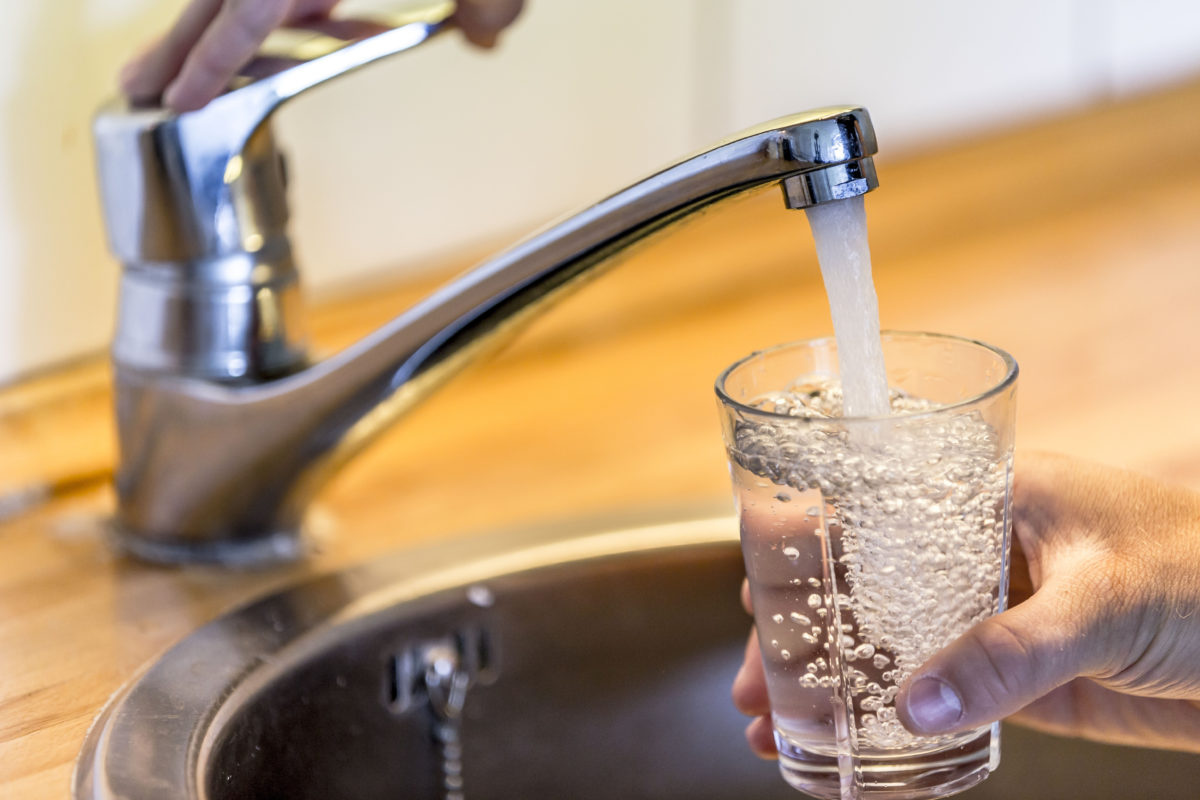
The Bipartisan Infrastructure Law includes important revisions to and added funding for State Revolving Funds (SRFs) for clean water and drinking water. These programs offer low-interest loans and grants. The law allocates new supplementary funding of $11.7 billion each over five years to the Clean Water and Drinking Water State Revolving Funds, plus $5 billion for addressing emerging contaminants and $15 billion for lead service line replacement. The new funding comes on top of existing annual base funding appropriated by Congress.
The federal SRF programs are designed to support projects that help communities meet the requirements and goals of the Clean Water Act and Safe Drinking Water Act, respectively. The Clean Water State Revolving Fund (CWSRF) has long been a way to address combined sewer overflows when rainwater overwhelms wastewater systems and forces the release of untreated sewage into rivers and lakes. The Drinking Water State Revolving Fund (DWSRF) addresses the risk from lead pipes and other water distribution challenges.
Voss noted that just last year, the EPA, for the first time, examined lead service lines in its Water Infrastructure Needs Survey and Assessment.
“The inclusion of lead service lines in the survey was really important,” said Voss. “Hopefully, having more data to tell us where SRF funding is most needed will enhance states’ abilities to make a dent in the crisis.”
Under the Bipartisan Infrastructure Law, almost half the payments for lead service line replacement in disadvantaged communities must be forgivable loans – essentially grants – and almost half the total drinking water funds must be spent on disadvantaged communities.
The law also says a quarter of loans allocated to fight emerging contaminants like PFAS through drinking water infrastructure will be forgivable. Finally, the law reduced the
amount states had to pay to match the federal loans through 2023 – from 20% to 10% — taking some burden off states in the initial years of BIL funding.
Loans and grants for clean water infrastructure are available to municipalities, non-profits, and private entities, like homeowners’ associations and watershed groups. Almost half of the loans are also forgivable if municipalities meet affordability criteria or advance energy efficiency and sustainability targets.
Voss noted that while the dollars are primarily federal, states have broad authority in deciding how they are spent. Each state is required to submit an Intended Use Plan (IUP) to the federal government outlining how the state plans to spend the federal funds for water and infrastructure during that fiscal year, and the public has the chance to comment on these plans. Ultimately, these plans have a massive influence on clean water outcomes in the Great Lakes.
To equip NGOs and community organizations with the tools and understanding to navigate these layers of water infrastructure policy and to help guide states through this process with a focus on equity and climate resilience, the Alliance launched the SRF State Advocates Forum in 2021, in partnership with the Environmental Policy Innovation Center, PolicyLink, and River Network. The forum has helped more than 50 organizations engage with state SRF administrators and submit comment letters on state Intended Use Plans.
“The SRF program could be quite powerful in addressing lead service lines and water affordability problems because it has longevity,” said Voss. “Multi-year funding is needed to make sure there is long-term investment in communities, not just upfront capital where the community is later left with the bill.”
Building Healthy Communities with Systemic Change

Detroit has been a poster city for the water infrastructure crisis, with environmental justice implications, as Black residents are disproportionately affected by lack of access to quality drinking water and by basement flooding, even while faced with unaffordable water bills and denial of flooding compensation claims.
As in neighboring Flint and other cities around the country, many metro Detroit residents deal with drinking water that can be dangerously contaminated with lead and other toxins, even as it is unaffordable for some families.
Monica Lewis-Patrick, President and CEO of the community organization We the People of Detroit, emphasized that the city of Detroit not only needs to overhaul its water infrastructure but needs to do it in a way that prioritizes existing residents without contributing to inequality and displacement.
“In my mind there’s two things,” she said. “One is making sure the infrastructure is being invested in so it’s going to be to the benefit of the residents who are in the city now,” not only aimed at attracting new and wealthier residents.
Second, the jobs and economic stimulus created by the overhaul need to benefit residents who have suffered for too long from inadequate investment. In support of building long-term climate resilience, Mayor Duggan’s administration released the Detroit Climate Strategy in November 2023.
Healthy Water, Healthy People
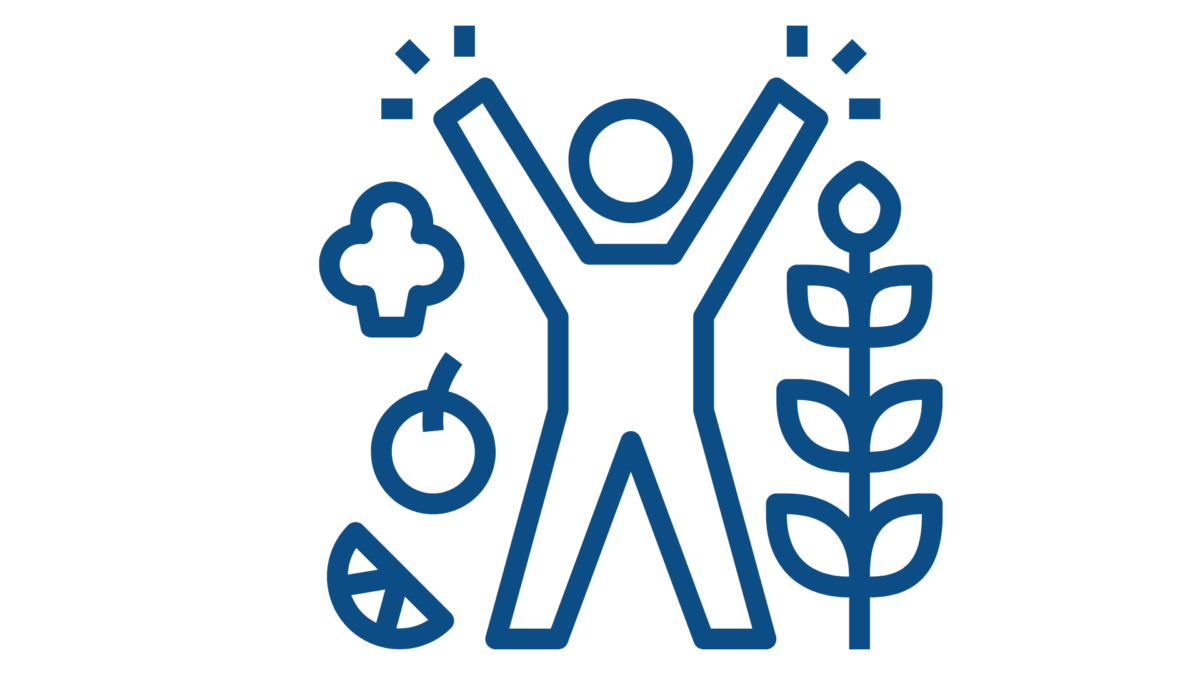
The particular emphasis on clean water during the pandemic spotlighted the epidemic of water shutoffs in Detroit and other low-income communities across the Great Lakes. In Detroit, shut-offs were linked to higher rates of COVID-19 and disproportionately affected elderly and Black people.
Lewis-Patrick decried the “racialized narrative” that “Black people just woke up one day and didn’t pay their bills,” citing water rates that have more than doubled in recent decades, far outpacing wage growth, with inadequate supports for those living on fixed incomes.
Lewis-Patrick pointed to a study by Dr. Nadia Gaber featuring Detroit and showing the psychosocial impacts of not having secure access to clean water.
“Even outside of the highly concentrated Black and brown communities of the urban core, poor white folks are affected too,” she said. “Every human being deserves clean, affordable water.”
In the work of protecting and restoring the Great Lakes, it’s critical that no one is left behind. For many in the region, water flowing from the tap and running through our water systems is the primary way people connect to the Great Lakes.
“A healthy Great Lakes region is one where every person can wake up knowing our shared water will be there for them and their family,” said Joel Brammeier, Alliance president & CEO. “Water connects us all. That’s why we’re working to make sure everyone who lives here can rely on the lakes every day.”
The post Water Infrastructure: Getting Great Lakes Water to the People appeared first on Alliance for the Great Lakes.
News - Alliance for the Great Lakes
News - Alliance for the Great Lakes
https://greatlakes.org/2024/01/water-infrastructure-getting-great-lakes-water-to-the-people/
Applications open for community climate support program
A program for community leaders in northern Wisconsin who are looking for ways to address climate change is available through Wisconsin Sea Grant and the Lake Superior National Estuarine Research Reserve.
The Lake Superior Climate Champions Program began provides a yearlong opportunity for community teams to work on a goal of their choosing that addresses climate change, with a minimum of $2,500 in funding, guidance from Sea Grant and Reserve staff members and the chance to connect with other communities working on climate challenges. The program completed its first successful cohort last year and is seeking applicants for a new round of support in 2024.
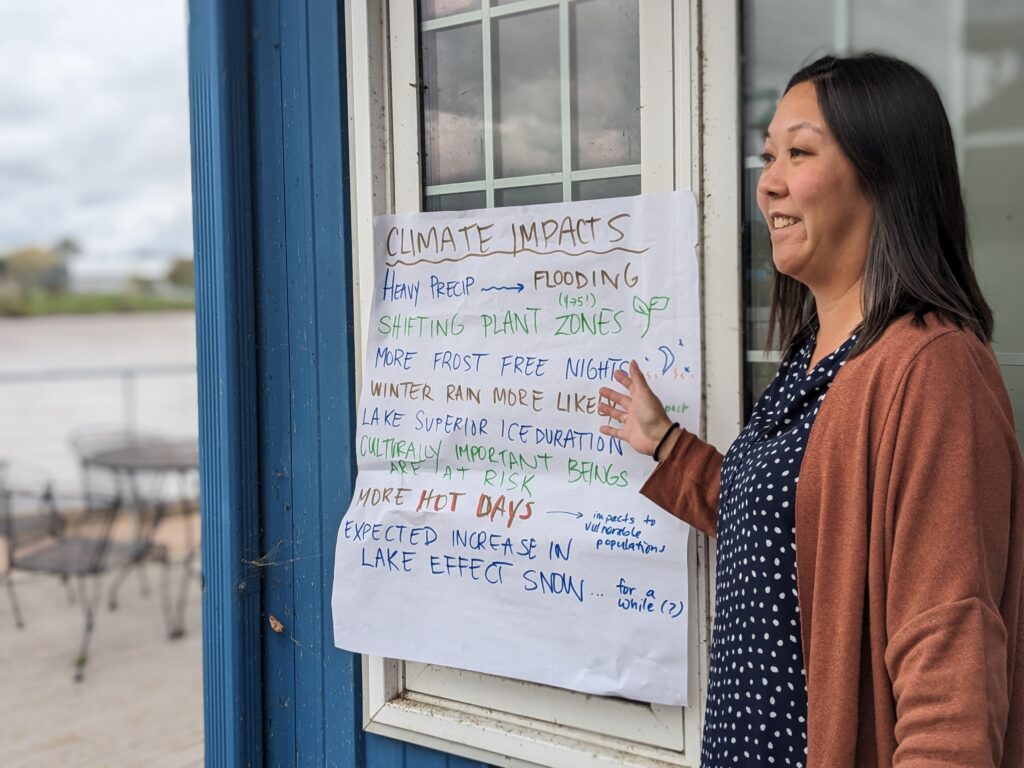
Wisconsin Sea Grant’s Natalie Chin discusses climate change impacts with Climate Champions teams in 2023. Image credit: Lake Superior National Estuarine Research Reserve
Participating teams of two to four people must be from one of the four coastal counties (Douglas, Bayfield, Ashland or Iron) and may include representatives from multiple jurisdictions. The teams can include community members in decision-making roles, such as tribal or county government staff, elected officials, members of local boards and committees or regional intergovernmental committees.
“All across Lake Superior’s coastal communities, we feel the impacts of climate change firsthand,” said Karina Heim, coastal training program coordinator with the Lake Superior Reserve. “Finding time and the capacity to address climate issues can be a challenge for local leaders. Our Climate Champions Program offers dedicated, yearlong support for climate work.”
Teams who want to participate need to apply online by March 15 at: https://go.wisc.edu/0385yk. Teams will be selected by April and the program will begin in May.
The previous year’s projects included creating the outline of a coastal adaptation plan for Washburn and Ashland, Wisconsin, that focused on flood resilience, climate adaptation and a project priorities list; also, emergency managers from Ashland, Bayfield, Douglas and Iron counties developed an online form to record road maintenance activities for Great Lakes coastal counties in Wisconsin.
Applicants are encouraged to seek support for a new climate resilience effort that is relevant to their community. This could include developing a new resource or tool, initiating an assessment, bringing people together in dialog or developing a specific climate plan.
Other possible project examples include: finding and using an assessment or planning tool to prepare for climate challenges (flooding, public health, etc.), planning a workshop or a facilitated process that allows for climate change learning and dialog and incorporating climate change considerations into an existing project or process, such as land-use planning or stormwater management.
For more information, visit: https://go.wisc.edu/am468e.
The post Applications open for community climate support program first appeared on Wisconsin Sea Grant.News Releases | Wisconsin Sea Grant
News Releases | Wisconsin Sea Grant
https://www.seagrant.wisc.edu/news/applications-open-for-community-climate-support-program/
Wind Chill Advisory issued January 20 at 10:40PM CST until January 21 at 9:00AM CST by NWS
Current Watches, Warnings and Advisories for Brown (WIC009) Wisconsin Issued by the National Weather Service
https://alerts.weather.gov/cap/wwacapget.php?x=WI126885399C20.WindChillAdvisory.1268853B3A30WI.GRBWSWGRB.00359324d3a4e90854dfc1b31db7e4d8
Wind Chill Advisory issued January 20 at 2:32PM CST until January 21 at 9:00AM CST by NWS
Current Watches, Warnings and Advisories for Brown (WIC009) Wisconsin Issued by the National Weather Service
https://alerts.weather.gov/cap/wwacapget.php?x=WI1268852CC7C0.WindChillAdvisory.1268853B3A30WI.GRBWSWGRB.9b55b5ae820260f9b04dfe489afda625
Dance groups leap into environmental communication
Pirouettes, leaps and pliés don’t come to mind when you think of environmental justice.
But for Michigan State University theater professors Deric McNish and Rob Roznowski, dance and theater are the perfect communicative devices for such serious topics.
The post Dance groups leap into environmental communication first appeared on Great Lakes Echo.Great Lakes Echo
http://greatlakesecho.org/2024/01/20/dance-groups-leap-into-environmental-communication/
Wind Chill Advisory issued January 20 at 3:52AM CST until January 21 at 9:00AM CST by NWS
Current Watches, Warnings and Advisories for Brown (WIC009) Wisconsin Issued by the National Weather Service
https://alerts.weather.gov/cap/wwacapget.php?x=WI1268852B21E0.WindChillAdvisory.1268853B3A30WI.GRBWSWGRB.9b55b5ae820260f9b04dfe489afda625
Special Weather Statement issued January 20 at 12:36AM CST by NWS
Current Watches, Warnings and Advisories for Brown (WIC009) Wisconsin Issued by the National Weather Service
https://alerts.weather.gov/cap/wwacapget.php?x=WI1268852AA670.SpecialWeatherStatement.1268852B1F24WI.GRBSPSGRB.55b57b6e07717bb15458b89b4aacd12f
Nibi Chronicles: Violence in Ma’iingan Country
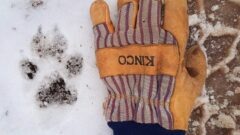
“Nibi Chronicles,” a monthly Great Lakes Now feature, is written by Staci Lola Drouillard. A direct descendant of the Grand Portage Band of Ojibwe, she lives and works in Grand Marais on Minnesota’s North Shore of Lake Superior. Her two books “Walking the Old Road: A People’s History of Chippewa City and the Grand Marais Anishinaabe” and “Seven Aunts” were published 2019 and 2022, and she is at work on a children’s story.
Great Lakes Now
https://www.greatlakesnow.org/2024/01/nibi-chronicles-violence-in-maiingan-country/
Special Weather Statement issued January 19 at 2:17PM CST by NWS
Current Watches, Warnings and Advisories for Brown (WIC009) Wisconsin Issued by the National Weather Service
https://alerts.weather.gov/cap/wwacapget.php?x=WI1268851D7FA4.SpecialWeatherStatement.1268852B82C0WI.GRBSPSGRB.58662523f54ce0007a5fbf00c85262da
Moen honored by Wisconsin’s commercial fishers
Last week, Sea Grant’s Sharon Moen was the recipient of an Appreciation Award from the Wisconsin Commercial Fishing Association to honor her work to secure the overseas market for whitefish and cisco roe in Sweden.
In 2021, Moen responded to Wisconsin commercial fisher and fish processor requests for help in addressing challenges to the export of Great Lakes lake whitefish and Lake Superior cisco roe to Sweden. Negative sustainability ratings developed by the World Wildlife Fund-European Union prompted ICA Sweden–the largest grocery market chain in the country–and other markets, to remove the roe from shelves.
Moen, food-fish outreach coordinator, intervened and due to that educational outreach spanning roughly two years, the rating was changed last fall so sales valued at $15 million annually can resume.
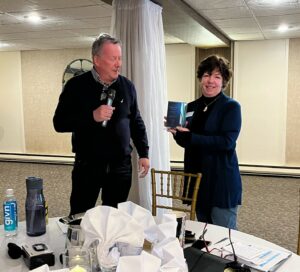
Sharon Moen accepts an award from the president of Wisconsin’s commercial fishing industry in honor of her work to restore a $15-million overseas market for Great Lakes fish products. Photo: Cindy Hudson, Michigan Sea Grant.
“I’m so pleased Wisconsin Sea Grant could facilitate the flow of evidence-based information in a way that helped the commercial fishing industry,” Moen said. “Sustainable fisheries management is an important topic and one our commercial fishers, fisheries managers and Sea Grant takes seriously.”
About Moen’s contribution, the association’s president Daniel Schwarz, said, “Moen’s commitment to this global project was extraordinary. No matter the size of the obstacle thrown her way, she managed to effectively tackle it and successfully conquer it. It is rare these days to see someone who truly cares to the point of no option for failure. Moen took the time to understand the issues at hand directly meeting with fishermen, processors/exporters around the upper Great Lakes in addition to reaching out to regulating government offices to collect updated correct information regarding the current status of the upper Great Lakes fishing industry.”
He continued, “Moen then effectively communicated all this information to Scandinavian regulatory agencies as well as consumers to build back the confidence in and credibility of the Great Lakes products. This enormous undertaking by one person took great leadership and communication skills, determination and passion.”
Schwarz is the owner of Dan’s Fish Inc., which is based in Sturgeon Bay. Wisconsin’s tribal and state-licensed commercial fishers primary catch lake whitefish, cisco and lake trout from Lake Superior. In Lake Michigan, state-licensed commercial fishers target lake whitefish and yellow perch. Burbot, rainbow smelt and chubs also make up part of Wisconsin’s Great Lakes commercial catch.
The post Moen honored by Wisconsin’s commercial fishers first appeared on Wisconsin Sea Grant.
News Releases | Wisconsin Sea Grant
News Releases | Wisconsin Sea Grant
https://www.seagrant.wisc.edu/news/moen-honored-by-wisconsins-commercial-fishers/
Restoring Ontario’s lost grasslands is as important as planting trees
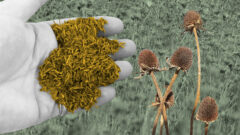
By Emma McIntosh, The Narwhal
The Great Lakes News Collaborative includes Bridge Michigan; Circle of Blue; Great Lakes Now at Detroit Public Television; Michigan Public, Michigan’s NPR News Leader; and The Narwhal who work together to bring audiences news and information about the impact of climate change, pollution, and aging infrastructure on the Great Lakes and drinking water.
Great Lakes Now
https://www.greatlakesnow.org/2024/01/restoring-ontarios-lost-grasslands-important-as-planting-trees/
The Supreme Court wrestles with major challenges to the power of federal regulators
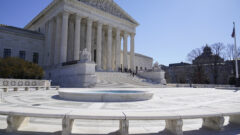
By Mark Sherman, Associated Press
WASHINGTON (AP) — Conservative Supreme Court justices on Wednesday voiced support for weakening the power of federal regulators, but it was not clear whether a majority would overturn a precedent that has guided American law for four decades over everything from the safety of food and drugs to environmental protection.
Great Lakes Now
https://www.greatlakesnow.org/2024/01/ap-supreme-court-wrestles-with-major-challenges-to-power-of-federal-regulators/
Strong winds uncover spectacular features and long-lost structures
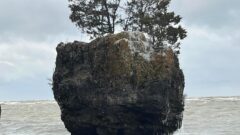
People on the western shore of Lake Erie witnessed strange sights after a winter storm came through on January 13. Parts of the lake that are usually under water were suddenly dry and visible, after wind gusts up to 55 mph pushed large volumes of water east. At least one long-lost human-made structure and striking natural features were revealed.
Great Lakes Now
https://www.greatlakesnow.org/2024/01/strong-winds-uncover-spectacular-features-and-long-lost-structures/
A rising tide of infrastructure funding floats new hope for Great Lakes shipping
The Biden administration has set aside $17 billion to improve maritime infrastructure, money that many want to invest into capital improvements at Great Lakes ports. Read the full story by NPR.
Great Lakes Commission
https://www.glc.org/dailynews/20240119-infastructure-funding
8 ships to lay up in Twin Ports for winter including the longest ship on the Great Lakes
Eight ships will spend the off-season in the Duluth-Superior twin Ports, twice as many as last winter, according to the Duluth Seaway Port Authority. Read the full story by the Star Tribune.
Great Lakes Commission
https://www.glc.org/dailynews/20240119-twin-ports
Bipartisan bill would authorize $200M for hi-res mapping of Great Lakes lakebeds
Michigan Reps. Debbie Dingell and Lisa McClain introduced a bipartisan bill today that would authorize $200 million to conduct high-resolution bathymetric mapping of lakebeds of the Great Lakes. Read the full story by WXYZ-TV – Detroit, MI.
Great Lakes Commission
https://www.glc.org/dailynews/20240119-lakebed-mapping
Elk Rapids wants to help its shoreline through new state Climate Corps program
Elk Rapids, Michigan, is surrounded by water. To protect their future the city plans to hire a shoreline management coordinator through a new state program known as the MI Healthy Climate Corps. Read the full story by Great Lakes Now.
Great Lakes Commission
https://www.glc.org/dailynews/20240119-climate-crops-program
748-foot freighter is last through Soo Locks, now closed for season
The 748-foot S.S. Philip R. Clarke entered the Soo Lock facility’s Poe Lock around 9 a.m. on Tuesday to close out the 2023 navigation season. Read the full story my MLive.
Great Lakes Commission
https://www.glc.org/dailynews/20240119-soo-locks
Impacts of warming trend on Great Lakes’ eco-system and future winters
Lake Superior has long been known as the icy lake, but studies have shown that Superior is one of the fastest warming lakes in the world. And it’s not just Superior, the surface temperature and all five of the Great Lakes has increased in the last few decades, having profound impacts across the region. Read the full story by WPBN-TV – Traverse City, MI.
Great Lakes Commission
https://www.glc.org/dailynews/20240119-warming-trends
Even in water-rich Wisconsin, purifying sewage into drinking water gains a foothold
Wisconsin abounds with water resources but in some corners of the state, access to fresh water can be scarce or expensive. Efforts are underway to convert sewage into a safe, drought-resistant source of drinking water. Read the full story by Wisconsin Public Radio.
Great Lakes Commission
https://www.glc.org/dailynews/20240119-wisconsin-water
Can AI caribou lead us to our prehistoric past?
At the bottom of Lake Huron there’s a ridge that was once served as an ancient caribou hunting site. Computer scientists are using artificial intelligence to predict caribou movement and help find important archaeological sites. Read the full story by Interlochen Public Radio.
Great Lakes Commission
https://www.glc.org/dailynews/20240119-ai-caribou
Some fishing companies in the Great Lakes region pledge to use all parts of their catch by 2025
Twenty-one Great Lakes region fishing companies have signed the organization’s 100% Great Lakes Fish Pledge, committing to using all parts of the whitefish, lake trout, yellow perch, and walleye that they catch by 2025. Read the full story by Michigan Public.
Great Lakes Commission
https://www.glc.org/dailynews/20240119-100-great-lakes-fish
NCEI’s Marine Microplastics Database
NCEI News Feed
https://www.ncei.noaa.gov/news/nceis-marine-microplastics-database
The Toxic Sands Threatening Fish in Lake Superior
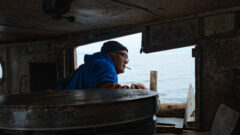
By Shantal Riley, Undark
Shantal Riley is an award-winning health and environmental reporter, focused on water quality in communities of color. Her work has been featured by Frontline PBS, NOVA PBS, the Washington Post Magazine, and other publications.
This story was supported in part by The Uproot Project, which is operationally and financially supported by Grist.
Great Lakes Now
https://www.greatlakesnow.org/2024/01/the-toxic-sands-threatening-fish-in-lake-superior/
Participating in the 2024 AMS Annual Meeting
NCEI News Feed
https://www.ncei.noaa.gov/news/ams-2024
Elk Rapids wants to help its shoreline through new state Climate Corps program
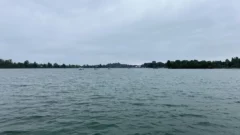
By Izzy Ross, Interlochen Public Radio
This coverage is made possible through a partnership with IPR and Grist, a nonprofit independent media organization dedicated to telling stories of climate solutions and a just future.
Elk Rapids is surrounded by water.
Great Lakes Now
https://www.greatlakesnow.org/2024/01/elk-rapids-wants-to-help-its-shoreline-through-new-state-climate-corps-program/
Lawsuit could complicate drone laws for Michigan hunters and anglers
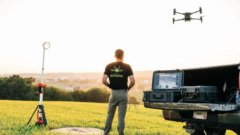
This article was republished here with permission from Great Lakes Echo.
By Ben Eiler, Great Lakes Echo
The founder of a company that uses drones to recover deer carcasses that hunters cannot find says that Michigan’s prohibition of the practice violates his First Amendment rights.
Great Lakes Now
https://www.greatlakesnow.org/2024/01/lawsuit-could-complicate-drone-laws-for-michigan-hunters-and-anglers/
Michigan lawmakers have more energy priorities in 2024
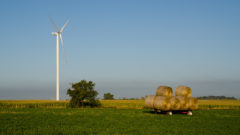
By Kelly House, Bridge Michigan
The Great Lakes News Collaborative includes Bridge Michigan; Circle of Blue; Great Lakes Now at Detroit Public Television; and Michigan Public, Michigan’s NPR News Leader; who work together to bring audiences news and information about the impact of climate change, pollution, and aging infrastructure on the Great Lakes and drinking water.
Great Lakes Now
https://www.greatlakesnow.org/2024/01/michigan-lawmakers-have-more-energy-priorities-in-2024/
Supreme Court poop dispute could have big impact on Michigan environment
A legal fight about how to dispose of the copious manure generated by Michigan’s largest livestock operations has reached Michigan’s highest court, with potentially far-reaching implications for the state’s ability to limit pollution of all kinds. The case comes as Michigan, Ohio, Indiana, and Canada struggle to address the agricultural pollution that sullies lakes and rivers across the region and turns Lake Erie bright green with algae every summer. Read the full story by Michigan Public.
Great Lakes Commission
https://www.glc.org/dailynews/20240117-manure-court
Great Lakes icebreaking by the numbers: Coast Guard needs $3 billion to keep it up, report says
The U.S. Coast Guard will need more than $3 billion to maintain its icebreaking capacity in wintry weather along the Great Lakes, according to a new U.S. Government Accountability Office report. Read the full story by The Plain Dealer.
Great Lakes Commission
https://www.glc.org/dailynews/20240117-icebreaking-cost
Great Lakes policy advocate calls out Illinois for intransigence on invasive carp solution
An interview with the chief operating officer for the Chicago-based non-profit, the Alliance for the Great Lakes, details the Great Lakes region’s efforts to stop the advance of invasive carp via the Brandon Road lock and dam in Joliet, Illinois. Read the full story by Great Lakes Now.
Great Lakes Commission
https://www.glc.org/dailynews/20240117-carp-policy

